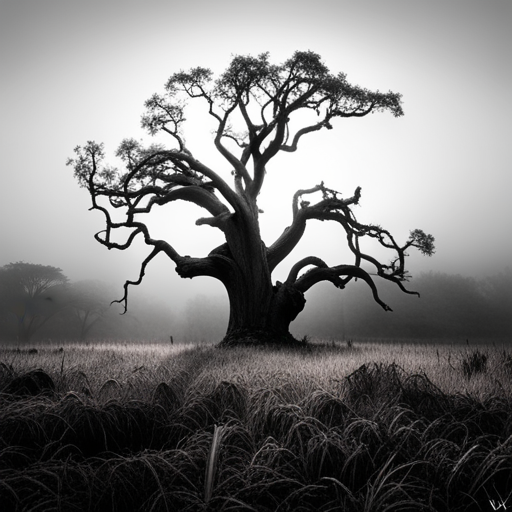Dreams have always been a mysterious and enigmatic part of human existence. Through the ages, individuals have tried to uncover the hidden significance of these nighttime visions, exploring the world of dream analysis. Despite the years that have passed, fascination with dreams has endured, and the quest to interpret their symbols continues.
So, how are dream symbols interpreted?
Dream interpretation is a complex and nuanced process that involves unraveling the intricate tapestry of the subconscious mind. It requires an analytical and insightful approach to decode the meanings behind the symbols that manifest in our dreams. By examining common dream symbols and their associated interpretations, we can gain a deeper understanding of our innermost thoughts and emotions.
Personal experience also plays a vital role in dream symbolism. Each individual brings their unique background and life experiences to their dream world, shaping the significance of the symbols encountered. This subjective element adds depth and complexity to the interpretation process, highlighting the importance of introspection and self-reflection.
In this article, we will explore different interpretation techniques, the connection between dreams and emotions, as well as cultural and historical variations in dream symbolism. We will also discuss the benefits of keeping dream journals and the limitations of dream interpretation. By delving into the realm of dream symbolism, we can embark on a journey of self-discovery and personal growth.
Key Takeaways
- Dream symbols are subjective and their interpretation varies from person to person.
- Dream symbols provide insight into subconscious thoughts, emotions, desires, fears, and unresolved issues.
- Dream interpretation can serve as a therapeutic outlet for emotional healing and processing unresolved emotions or traumatic experiences.
- Engaging in dream interpretation enhances overall well-being and understanding of oneself.
The History of Dream Interpretation
The history of dream interpretation is a fascinating journey through the depths of human consciousness. Since ancient times, people have been fascinated by the mysterious nature of dreams and have sought to understand their significance.
The interpretation of dreams has evolved over time, with different cultures attributing various meanings to dream symbols. In ancient Egypt, for example, dreams were believed to be messages from the gods and were often interpreted by priests.
In the early 20th century, Sigmund Freud popularized the idea that dreams are a window into the unconscious mind, revealing our hidden desires and fears.
Today, dream interpretation is a complex field that combines psychology, symbolism, and personal experiences. Understanding the history of interpretation and the significance of symbols helps us delve deeper into the rich tapestry of our dreams.
Now, let’s explore common dream symbols and their meanings.
Common Dream Symbols and Their Meanings
In the realm of slumber, certain images arise to guide our subconscious minds on a mystical journey of hidden meanings and cryptic messages. These common dream symbols hold significant importance in the field of dream interpretation. From flying to falling, animals to water, each symbol carries its own unique message that can provide insight into our deepest desires, fears, and emotions.
Dream interpretation techniques help us decipher these symbols, allowing us to unravel the mysteries of our dreams. By analyzing the context, emotions, and personal experiences associated with these symbols, we can gain a deeper understanding of our subconscious thoughts and desires. This understanding can then guide us in making sense of our waking lives.
Transitioning into the next section, personal experiences play a vital role in shaping the meaning behind these dream symbols.
The Role of Personal Experience in Dream Symbolism
Explore the raw power of your personal experiences, as they infuse your dreams with an electrifying tapestry of emotions and memories. Your dreams are deeply influenced by your personal bias and individual perspective. The symbols that appear in your dreams are not universal; they are unique to you and carry meaning based on your own life experiences.
For example, seeing a cat in your dream may symbolize independence and mystery to one person, while to another it may represent fear and vulnerability. Your personal experiences shape the interpretation of these symbols, giving them a depth and complexity that is specific to you.
By exploring the connections between your dreams and your personal experiences, you can unlock a wealth of insight and understanding. Transitioning into the next section, different interpretation techniques offer additional tools to help unravel the layers of meaning within your dreams.
Different Interpretation Techniques
Unleash the power of your imagination and dive into a world of diverse interpretation techniques that’ll unravel the captivating layers of meaning hidden within your dreams.
When it comes to analyzing dream symbols, there are various approaches that can be employed. One technique is the Freudian method, which focuses on the unconscious mind and the underlying sexual and psychological desires that may be reflected in dream imagery.
Another technique is the Jungian approach, which places emphasis on archetypes and collective unconsciousness, interpreting symbols in a more universal context.
Additionally, there is the Gestalt method, which aims to understand dreams as a whole, looking at the overall narrative and themes rather than individual symbols.
By utilizing these different techniques, one can delve deep into the rich tapestry of dream symbolism and unlock the profound messages they hold.
As we transition into the subsequent section about the connection between dreams and emotions, it becomes evident that these interpretation techniques provide a valuable framework for understanding the emotional significance of dream symbols.
The Connection Between Dreams and Emotions
Discover the profound link between dreams and emotions, unraveling the intricate web of feelings and experiences that shape our innermost thoughts and desires.
Dreams have long been recognized as a reflection of our mental health, providing a window into our emotional well-being. Emotions play a significant role in dream symbolism, as they can influence the content and meaning of our dreams.
Positive emotions, such as joy and love, often result in pleasant and uplifting dream experiences, while negative emotions, such as fear and sadness, can manifest as nightmares or unsettling dreams.
The impact of emotions on dream symbolism is undeniable, as our subconscious mind seeks to process and make sense of our emotions through the medium of dreams.
This connection between dreams and emotions sets the stage for exploring the fascinating world of lucid dreaming and symbolism, where we can gain further insight into our innermost selves.
Lucid Dreaming and Symbolism
Immerse yourself in the captivating realm of lucid dreaming, where vivid imagery and hidden meanings intertwine, allowing you to navigate through the depths of your subconscious mind.
Lucid dreaming techniques provide a unique opportunity for conscious exploration of the dream world, enabling you to actively engage with the symbols and messages that arise. By becoming aware that you’re dreaming, you can actively shape the dream narrative and delve into the depths of your psyche. This heightened state of consciousness allows for a deeper understanding of the symbolism present in your dreams, as you’re able to actively interpret and interact with the imagery.
Lucid dreaming offers a gateway to subconscious mind exploration, providing valuable insights and self-discovery.
Transitioning now to explore the cultural and historical variations in dream symbolism, we begin to uncover the rich tapestry of interpretations that have shaped our understanding of dreams throughout time.
Cultural and Historical Variations in Dream Symbolism
Explore the diverse cultural and historical perspectives on dream symbolism as you delve into the rich tapestry of interpretations that have shaped our understanding of the subconscious realm throughout different time periods and societies.
Cultural influences play a significant role in shaping the meaning attributed to dream symbols. For example, in some Indigenous cultures, dreams are seen as messages from ancestors or spirits, while in Western societies, dreams are often interpreted as reflections of the dreamer’s desires or fears.
Over time, the evolution of dream symbolism has been influenced by various factors such as religious beliefs, societal norms, and technological advancements. Understanding these cultural and historical variations in dream symbolism allows us to appreciate the complexities of the human psyche and the ways in which our interpretations of dreams have evolved.
Transitioning into the subsequent section about the importance of dream journals and documentation, it becomes evident that keeping track of our dreams can provide valuable insights into our subconscious mind.
The Importance of Dream Journals and Documentation
Start documenting your dreams in a journal to unlock the hidden messages and insights that lie within your subconscious mind. Consistency is key when it comes to dream journaling. By recording your dreams on a regular basis, you create a valuable resource for reflection and analysis. This allows you to identify recurring symbols, patterns, and themes, providing a deeper understanding of your inner thoughts and emotions. A dream journal acts as a window into your unconscious mind, revealing the hidden meanings behind your dreams. It also enables you to track your progress in interpreting symbols and their personal significance over time. Reflecting on your dream journal can help you gain clarity and make connections between your dreams and your waking life. By documenting your dreams and engaging in regular reflection, you can harness the power of your subconscious mind for personal growth and self-discovery. Transitioning into the next section, let’s explore the limitations of dream interpretation.
The Limitations of Dream Interpretation
Although dream interpretation can provide valuable insights, it’s important to recognize that the understanding of dreams is subjective and can vary from person to person.
One of the limitations of dream interpretation is the debunking of dream symbols. While some symbols may have common interpretations, such as falling representing a loss of control, others may be unique to the individual’s personal experiences and associations. This subjectivity makes it difficult to establish universal meanings for dream symbols.
Additionally, dream interpretation relies heavily on the dreamer’s ability to recall and accurately describe their dreams. However, dreams are often fleeting and can be difficult to remember in detail. This limitation can hinder the accuracy and effectiveness of dream interpretation.
Despite these limitations, dream interpretation can still be a useful tool for self-reflection and personal growth. By examining the various symbols and themes in their dreams, individuals can gain insight into their subconscious thoughts and emotions, leading to a deeper understanding of themselves.
Using Dream Interpretation for Self-Reflection and Personal Growth
Utilizing dream interpretation can be a valuable tool for individuals to gain self-reflection and personal growth. Dreams often contain symbolic representations of our subconscious thoughts and emotions, providing us with insight into our deepest desires, fears, and unresolved issues. By analyzing and interpreting these dream symbols, we can embark on a journey of self-discovery and introspection.
Here are three ways dream interpretation can facilitate personal growth:
-
Increased self-awareness: Exploring dream symbols allows us to uncover hidden aspects of ourselves and gain a deeper understanding of our own motivations and behaviors.
-
Emotional healing: Dreams can serve as a therapeutic outlet, helping us process and release unresolved emotions or traumatic experiences.
-
Problem-solving: Dream interpretation can provide us with creative solutions to real-life problems by tapping into our subconscious wisdom and intuition.
By engaging in dream interpretation, we can unlock the potential for self-reflection and personal growth, ultimately enhancing our overall well-being and understanding of ourselves.
Frequently Asked Questions
What are the scientific theories behind dream interpretation?
Dream interpretation is a fascinating field that has been explored by various scientific theories. When it comes to understanding the meaning behind dreams, scientists have proposed several approaches.
One theory suggests that dreams serve as a way for the brain to process and consolidate information, helping us make sense of our experiences.
Another theory suggests that dreams are a manifestation of our subconscious desires and fears.
These scientific theories provide valuable insights into the intricate nature of dream interpretation.
Can dream symbols have different meanings for different individuals?
Dream symbols can indeed have different meanings for different individuals. This is because dream interpretation is highly personal and subjective. Each person’s experiences, emotions, and cultural influences shape how they perceive and understand symbols in their dreams. What may be significant or symbolic to one person may have a completely different meaning to another. Therefore, individual interpretation plays a crucial role in understanding the deeper messages and symbolism within one’s dreams.
Are there any specific techniques or exercises to enhance dream recall?
To enhance dream recall, there are several techniques and exercises you can try.
Keeping a dream journal is a powerful tool to record and remember your dreams.
Before going to sleep, set the intention to remember your dreams and focus on them upon waking up.
Practice relaxation techniques like meditation or deep breathing to improve your overall mindfulness.
Additionally, maintaining a consistent sleep schedule and prioritizing quality sleep can also enhance dream recall.
How do dreams contribute to our understanding of the subconscious mind?
Dreams offer a unique window into the subconscious mind, allowing you to gain a deeper understanding of your inner thoughts and emotions. By exploring the symbolism present in your dreams, you can unlock hidden meanings and uncover repressed emotions that may be influencing your waking life.
Dreams provide a rich landscape for self-reflection and personal growth, offering valuable insights into the complexities of the human psyche. By delving into your dreams, you can gain a profound understanding of yourself and your subconscious mind.
Are there any common misconceptions or myths about dream interpretation?
Common misconceptions and myths about dream interpretation abound. Some believe that dreams are simply random or meaningless, while others think they predict the future. However, dream analysis holds a deeper meaning. It’s a tool to unlock the subconscious mind and gain insight into our emotions, desires, and fears.
Dreams are not always literal, but symbolic representations. Understanding these symbols requires careful interpretation and an understanding of the individual’s unique experiences and associations.
Conclusion
In conclusion, dream interpretation offers a fascinating glimpse into the depths of our subconscious minds. Through the history of dream interpretation, we’ve come to understand the common symbols and meanings that appear in our dreams.
However, it’s important to remember that personal experience plays a significant role in the interpretation of these symbols. Different techniques, such as free association and symbol analysis, help us unlock the hidden messages within our dreams.
Dreams have a powerful connection to our emotions, serving as a window into our innermost desires and fears. Cultural and historical variations further shape the symbolism in dreams, highlighting the diversity of human experiences.
Keeping a dream journal and documenting our dreams can provide valuable insights into our psyche and aid in personal growth. Nevertheless, dream interpretation has its limitations, as dreams can be complex and open to multiple interpretations.
Overall, engaging in dream interpretation allows us to delve into the depths of our psyche, gaining a deeper understanding of ourselves and our subconscious mind. So go ahead, unravel the enigma of your dreams and unlock the hidden treasure trove of wisdom within.










